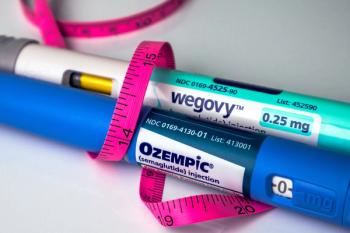
USP drug safety review: Requirements for compounding sterile preparations
USP wants input from healthcare practitioners and other interested parties regarding the proposed revisions.
During the 1980s and early 1990s, the development of standards for pharmacy compounding was prompted by the increasingly early hospital discharges of patients receiving intravenous therapy and a coincidence of nationwide injuries and deaths from pharmacy-compounded injectable preparations.
In 1990, four patients died of Enterobacter infection from a nonsterile cardioplegic solution compounded and sterilized by filtration in a hospital. In this particular incident, five bottles of the solution tested were nonsterile, several subsequent bottles tested were sterile, and another 93 bottles were dispensed without being tested. In the same year, two patients became blind and several others were infected by Pseudomonas after using indomethacin eyedrops compounded and sterilized by autoclaving in a retail pharmacy. As a result of these tragic events and enhanced public attention, some FDA officials began considering banning some types of pharmacy compounding by regulating compounded preparations as unapproved new drugs under the adulteration and misbranding provisions of the FDC Act. However, the existence of sterile compounding remains necessary in spite of the risks.
With the increasing need for sterile compounding and pressure from the FDA to address microbial contamination of compounded products in U.S. hospitals, several pharmacy organizations issued practice recommendations in an effort to provide professional practice assistance to pharmacists and technicians who compound sterile preparations. One detailed information source specifically related to pharmaceutical sterile compounding preparations was USP's Chapter 1206 "Sterile Products for Home Use" in the United States Pharmacopeia - National Formulary (USP-NF) in 1995.
The transformation of USP-NF Chapter 1206 to 797, from informational status (a chapter numbered above 1,000) to required or mandatory standards (a chapter numbered less than 1,000), began with the June 2000 establishment of USP Parenteral Preparations and Compounding Expert Committee, now called Sterile Compounding Expert Committee, followed by the July 13 and 14, 2000, meeting of the FDA Pharmacy Compounding Advisory Committee. The requirements of USP General Chapter 797, "Pharmaceutical Compounding - Sterile Preparations," became effective Jan. 1, 2004, and may be enforced by the FDA, state boards of pharmacy, and accreditation organizations.
The process for revising 797 requirements has begun. USP wants input from healthcare practitioners and other interested parties regarding the proposed revisions. The deadline for providing comments is Aug. 15, 2006. Historically, USP has solicited stakeholder input into the standards-setting process, which is open and transparent. This participatory approach strengthens the credibility and authority of USP standards.
USP is committed to broadly disseminating these proposed revisions to standards for sterile compounding to increase participation by healthcare practitioners and other interested parties in the revision/comment process. USP has also made the proposed revisions available on-line at
– Deletions are presented as a strikethrough.
– New content is double-spaced and presented in larger type.
– Unchanged text from the official General Chapter 797 is single-spaced and appears in 9-point type.
It is the ultimate responsibility of all personnel who prepare compounded sterile products to understand these fundamental practices and precautions, to develop and implement appropriate procedures, and to continually evaluate these procedures and the quality of the final products to prevent harm and fatality to patients who are treated with compounded sterile preparations.
THE AUTHOR is a Scientific Fellow in the Department of Patient Safety at the United States Pharmacopeia.
Newsletter
Pharmacy practice is always changing. Stay ahead of the curve with the Drug Topics newsletter and get the latest drug information, industry trends, and patient care tips.




